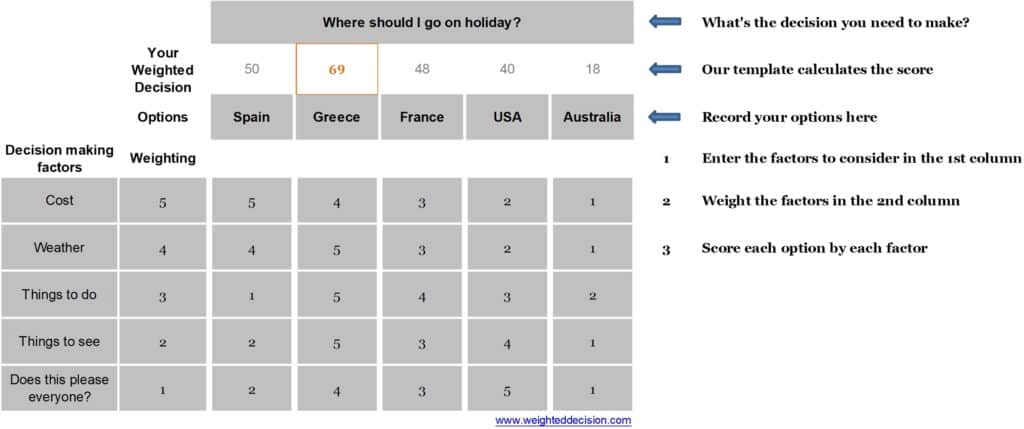Are you buying a new house, or are you a first time buyer? Are you unsure whether to go for a new build or an older property? With so many houses to choose from it can often be difficult to decide which will be a better investment. After all finding the right house can be stressful and you want as little hassle as possible. Here’s how we approached it using a weighted decision matrix.
A lot of people nowadays are resentful towards buying new-builds, whilst at the same time there are people who will only buy new houses. Why is that? What affects their choice? In order to take a closer look at this trend and also help you make the decision we have provided you with pros and cons for purchasing a new-build. This might help you make your decision.
With a large number of new houses being built each year, there is an enormous amount of choice when it comes to buying new-builds. At the same time many people dream of living in an older property, such as Georgian townhouse or a giant country cottage. Some of the current owners of such houses might want to warn you of the issues with maintenance and the great expenses that it could bring. Below we have looked at some advantages and disadvantages of buying a new-build, which will helpfully help you when making your decisions.
Advantages of buying new builds:
New-builds tend to be more energy efficient, they tend to be better insulated and in most cases will include double glazing, making them cheaper to run than the older houses. This could make a massive impact on your gas and electricity bills, which could potentially save you a fortune. Make sure you watch out for rooms that do not get enough sun light, meaning that you would need to have the lights on throughout the day. At the same time you would be surprised to find out that new-builds often are not that cost-effective as they might seem at first. Many are in category C (rates are between A and G) so buying a new-build doesn’t necessarily mean that you would be able to purchase a house that is in category A.
When buying a new-build you will have the great opportunity of choosing everything from the colour of your walls and carpets to the type of worktops you want in the kitchen. This might be attractive for some people as it would allow them putting their own stamp on their new house. One thing to remember though is the fact that the property needs to be left to settle and dry out, which might potentially take up to two years, so you could actually end up being stuck with magnolia walls for the first beginning. .
Purchasing a new-build tend to be associated with less stress and hassle when moving in as you won’t need to wait for anyone moving out and/or changing their mind the last minute. Even more the new builds usually tend to come with great deals and offers, which might be a better option for the first time buyers. All is good until hidden costs arise, associated with moving into a new-build. There are costs such as snagging inspections and the fixtures and fittings that previous owners of the older properties would have already installed. Be careful as some new-builds might seem overpriced to start with, however the extra cost is very often associated with owners having it all new, with no need to replace fixtures and fittings and redecorate your house.
Most new homes also come with a 10-year guarantee and the protection scheme from the builder, which might work in favour for you, ensuring that you get the most out of your new home and things would not go wrong in the soon future. New-builds also tend to be perceived with a lack of hassle when it comes to maintenance. They look esthetical better and are not as worn out as the older houses, where very often you would end up replacing a large amount of facilities and fixtures. Not only they need less work doing on but they also tend to be more secure and safe than the older homes – fire safety has always been though of when planning the new-builds and they usually come with security locks, burglar alarms and security lighting.
Disadvantages of new-builds:
Although there are a great deal of advantages when purchasing a new-build, there is also a great deal of disadvantages that put a lot of people off. One of the first and the most important one for many is the size of the property. We have to admit that new-builds tend to be much smaller in size than the older properties and unfortunately they also tend to come with smaller gardens and limited space available when it comes to garage, loft and storage space. Parking facilities also tend to be limited these days, with only shared driveways available, what could easily lead to arguments with your neighbours and cause tension.
New-builds are also very often associated with depreciation – new homes are only new for a very brief period of time but will require you paying a premium rate for it. Very often buyers rely on the show homes being the actual replications of their future homes and imagining what the house would look like. By doing so most people nowadays would end up buying their “dream houses” before they have been completed. In order to make the houses look better and larger, furniture tends to be kept to minimum in show homes to give the potential customers an illusion that the house is larger than it actually is.
Many buyers might find new-builds appearing less problematic and easier to get a mortgage for, however very often buyers find that their dream often turns into a nightmare with the poor workmanship, delays and unexpected costs involved in the process. Plasterboard walls nowadays don’t support much weight and are also not as soundproof as they used to be back in the day. Although they could potentially be associated with delays and the unknown, in a longer run new-builds would require less repairs than the older houses.
There will always be pros and cons for everything so the best thing to do is go through the pros and cons that you will personally face, writing lists could also help you make decisions. Make sure that this is the right decision for you and your family as there is something for everyone and you will find that people will have different opinions when it comes to houses and housing market. Why don’t you try and use the weighted decision matrix – it might come in handy for you and could help make your decision quicker.
Author’s bio:
Evita Williams writes for John Day Decorators Ltd, she is very passionate about home improvement, refurbishment and DIY, and she is always searching for new inspirations.
Follow the link to download your own weighted decision matrix template.


